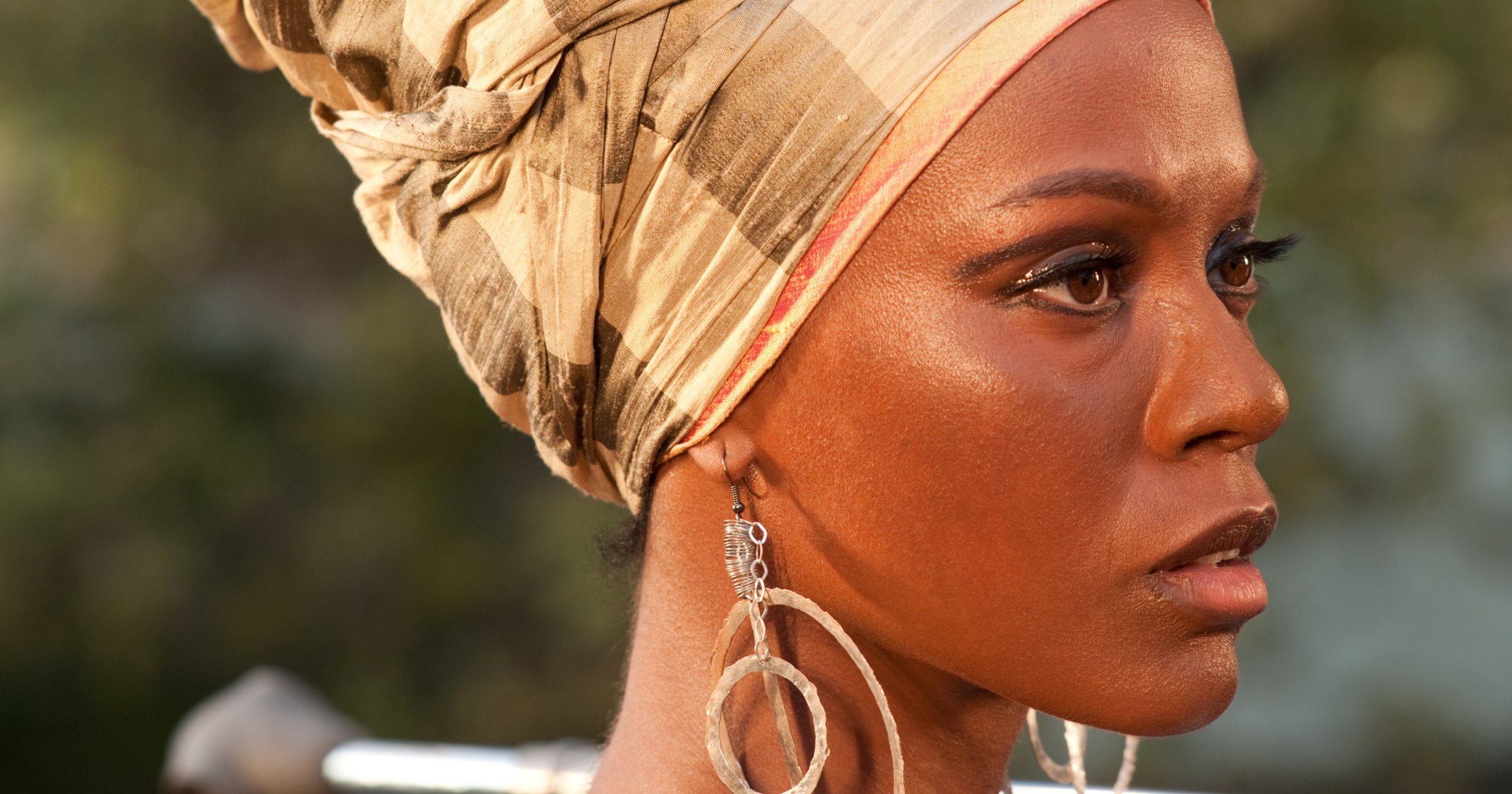
It’s a sign of our audacity as listeners and human beings that we automatically assume great singers belong to us. When it was announced, sometime in 2012, that Zoe Saldana—an Afro-Latina of Dominican and Puerto Rican descent, with light skin and delicate features—had been cast in an upcoming Nina Simone biopic, the online outcry among Simone fans was noisy and impassioned. Simone, who died in 2003, wasn’t just one of the world’s most expressive and distinctive jazz singers but also an ardent Civil Rights activist who later swayed toward militancy. In other words, her identity as a performer was inseparable from her identity as an African American woman. The Internet protest over Saldana’s casting came with a list of actresses—Viola Davis, Kimberly Elise, Mary J. Blige (who had originally been considered for the role)— who looked more like Simone. Later, the appearance of on-set pictures of Saldana, in a prosthetic nose and dark makeup, didn’t help.
If only Saldana’s lack of resemblance to Simone were the biggest problem with Nina, which was written and directed by Cynthia Mort (making her feature debut). Nina focuses mostly on the last 10 years or so of Simone’s troubled life, with sprinklings of flashback to earlier moments. Even so, the timeline is jumbled and confusing. This is a movie with no center, let alone any real beginning or end, but the story more or less starts around 1995, when Saldana’s Simone, after brandishing a gun in front of a recording executive after learning she’d signed all her royalties away years ago, is arrested and admitted to a psychiatric hospital. A nurse there, Clifton Henderson (David Oyelowo), recognizes and befriends her, and also reminds her that she’s free to leave the hospital whenever she wishes. She asks him to become her assistant: She’ll take him with her back to Paris, where she has lived for many years, having given up on the racism and overall inhospitableness of the United States.
Henderson quickly realizes the mistake he’s made. Simone makes impossible demands and then berates him for not measuring up. She’s a troublesome performer, irascible, ill-tempered and almost impossible to book. Henderson, though he’s moved by her fragility, can’t take it. He gives up and returns to the States, but Simone follows him and promotes him to manager. Their story of minor ups and major downs continues, culminating with Simone’s triumphant return to the States for a concert in Central Park.
At least, that’s what I think happens in Nina: This is the sort of movie where you stumble out thinking, What the hell did I just see? Mort pinpoints a few of the key injustices in Simone’s life—for example, the fact that her early ambitions to become a classical pianist were thwarted when the Curtis Institute, in Philadelphia, refused to accept her. (A title card at the film’s end reveals that the school awarded her an honorary degree in 2003, two days before her death.) Oyelowo gives an even-tempered, thoughtful performance, but he can’t anchor the mess around him. And Saldana is all wrong. With her perpetually downturned mouth, she captures Simone’s imperiousness and anger but almost nothing else, and she’s mannered to the point of cartoonishness—she’s impersonating an idea of Simone rather than trying to get to the truth of the woman. Worse yet, the musical numbers, in which Saldana does her own singing, have no heat: They capture little of the singer’s fierceness or tenderness, the seemingly contradictory poles of her genius. A Nina Simone novice seeing this picture would have no idea who this complex, magnificent artist was, or why she mattered. To get a sense of what Simone was really like, Liz Garbus’ straightforward but sensitive documentary What Happened, Miss Simone? is a much better bet.
It’s still hard to say, though, if the problems with Saldana’s performance are her own fault. Those who protested her casting may see the movie’s failure as a victory, but that’s a dangerous route. What if Saldana had played the role without the prosthetic nose and the makeup (which, admittedly, is mottled and just looks strange), and had been left free to channel the spirit of Simone using her voice, her eyes, her gestures and her soul? Nina is just sad for everybody.
Guitarist Al Shackman, one of Simone’s longtime sidemen and her close friend, recently wrote in the Huffington Post that Simone had once told him she’d have wanted Grace Kelly to play her in the movie version of her life. Simone identified with Kelly’s grace and beauty—this was how she felt inside. But she also knew that wish could be seen as a betrayal of her identity as a black woman, and she swore Shackman to secrecy, a confidence he obviously broke.
But if he hadn’t told this wonderful story, would any of us have thought about the Grace Kelly inside Nina Simone? Because surely, she’s there. The story is important for another reason. When we love an artist, we all feel a sense of protectiveness and appropriation—it’s like owning shares of stock. But to whom, really, does Nina Simone belong? If Nina proves anything, it’s that Simone is elusive and free, which is just as it should be.
More Must-Reads From TIME
- What Student Photojournalists Saw at the Campus Protests
- How Far Trump Would Go
- Why Maternity Care Is Underpaid
- Saving Seconds Is Better Than Hours
- Welcome to the Golden Age of Ryan Gosling
- Scientists Are Finding Out Just How Toxic Your Stuff Is
- The 100 Most Influential People of 2024
- Want Weekly Recs on What to Watch, Read, and More? Sign Up for Worth Your Time
Contact us at letters@time.com